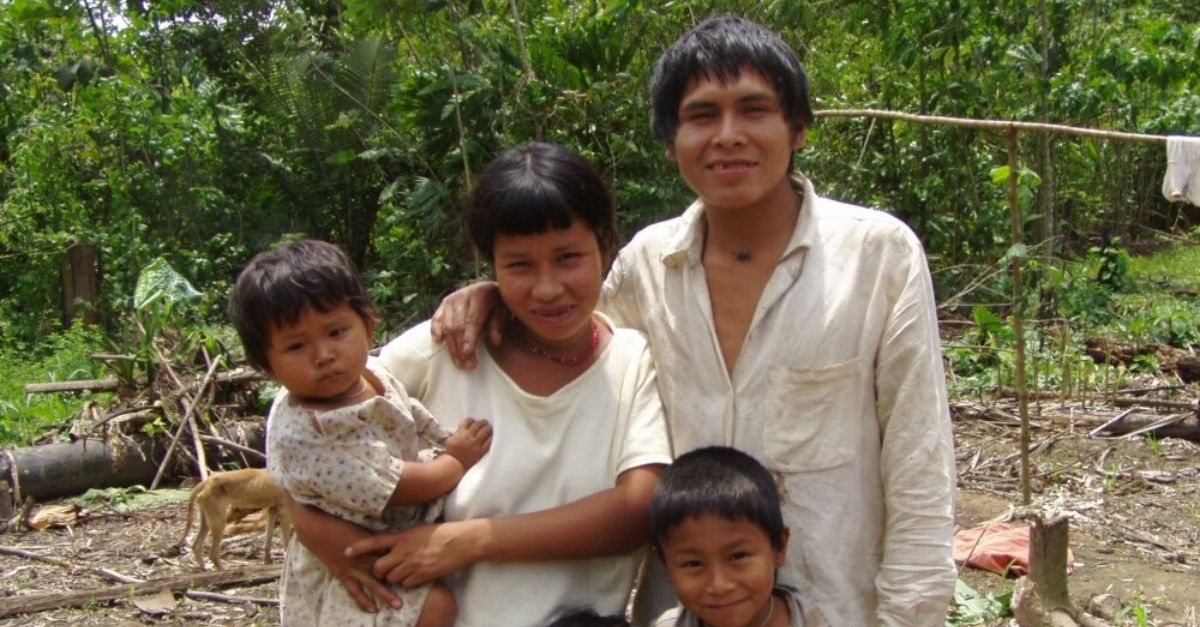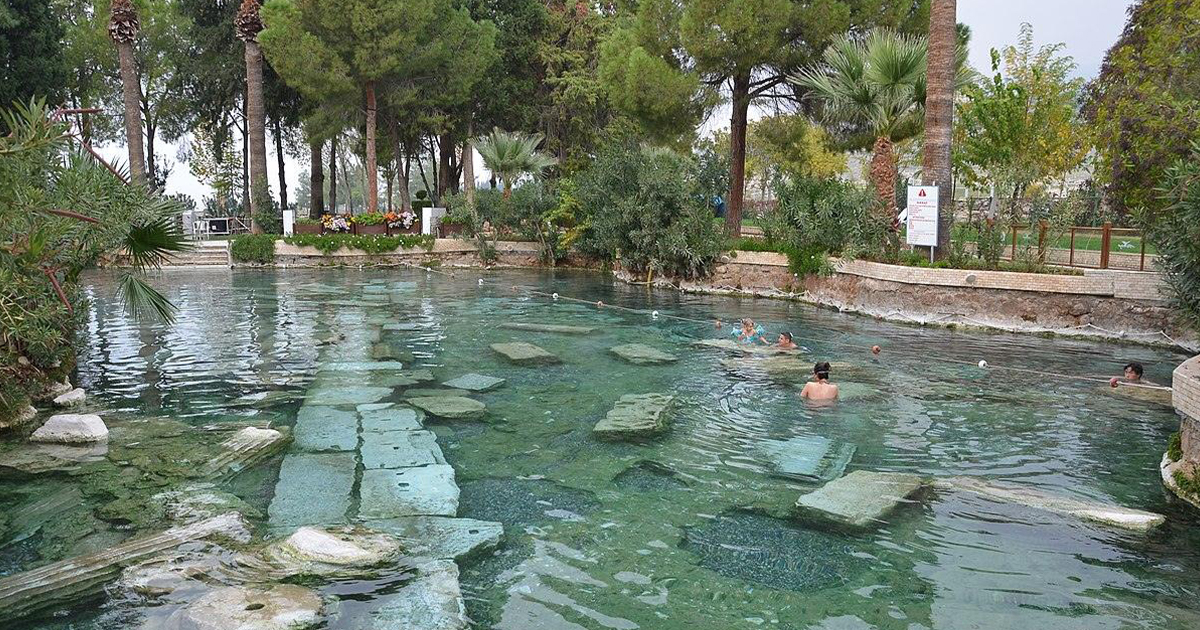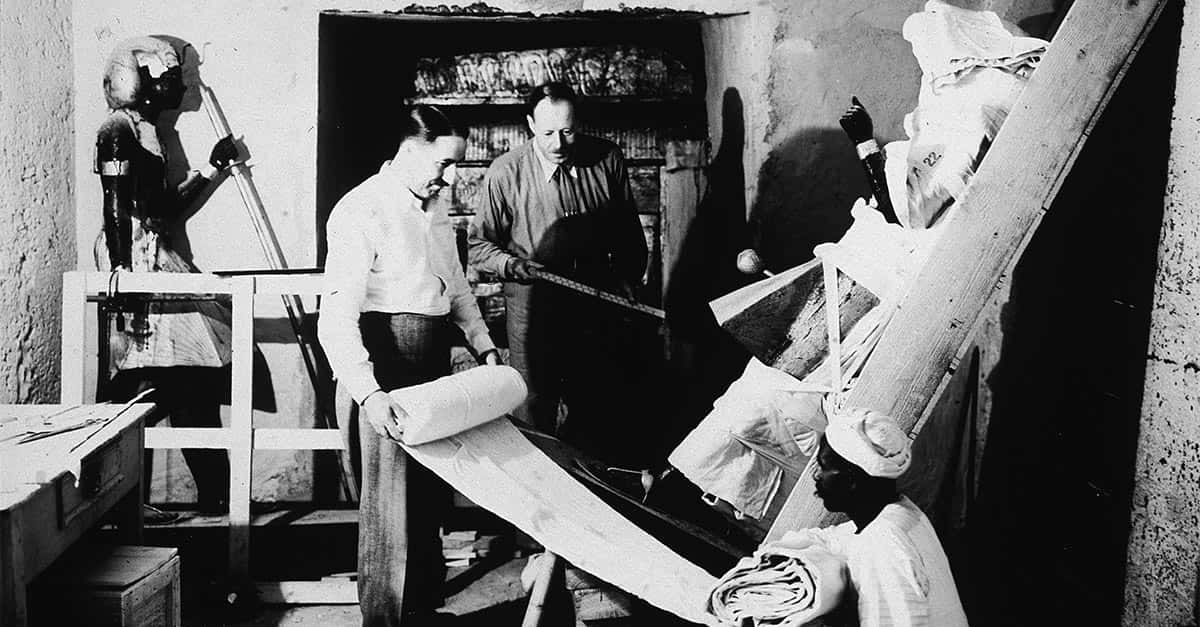The Tsimané
A small tribe living in the depths of the Amazon rainforest are now believed to be the healthiest people on the planet. Not only do they seem to age slower than everyone else, but they also seem to be immune to certain diseases that plague the rest of the world, including their tribal neighbors.
After decades of studies, researchers have finally figured out their secret—but there’s one major flaw in the process. 
Who Are The Tsimané?
The Tsimané—pronounced “chee-may-nay”—are a small semi-nomadic Indigenous tribe numbering just over 16,000. Traditionally, they’ve lived off the land almost entirely, building their homes and making their clothing from materials found in their environment.
 Erland Nordenskiold, Wikimedia Commons
Erland Nordenskiold, Wikimedia Commons
Where Do They Live?
The Tsimané live in a vast area of lowland Bolivia, inhabiting the rich, lush jungle and the savannas east of the Andes in the Beni department of Bolivia. Their territory spans roughly 300,000 hectares and runs along the Maniqui River.
 Luis Enrique Poggi Montalvo, Wikimedia Commons
Luis Enrique Poggi Montalvo, Wikimedia Commons
What Are Their Homes Like?
Given that they live in the jungle, the Tsimané’s traditional dwellings are built entirely out of wood, bark, leaves, and jungle twine. In the more modern villages, some Tsimané have basic structures built from concrete and tin, or sometimes just nicer-cut wood planks.
 The Tsimane Amazon tribe where people age better - BBC World Service, BBC World Service
The Tsimane Amazon tribe where people age better - BBC World Service, BBC World Service
What Are Their Villages Like?
The Tsimané typically live in small villages made up of 20 to 30 families. Each family has their own dwelling, where many children sleep alongside their parents.
Villages are also conveniently located near the river—a resource essential to their survival.
 Erland Nordenskiold, Wikimedia Commons
Erland Nordenskiold, Wikimedia Commons
What Do They Eat?
The Tsimané eat entirely from their surroundings. They partake in swidden agriculture (sometimes called slash and burn agriculture), hunting, fishing, and foraging. Their staples include starchy crops like plantains, rice, corn, cassava—and honey.
While they prioritize carbohydrates, they get lots of protein by hunting 32 different species of wild game, 43 species of fish, and harvesting a variety of domesticated animals. But there is one particular food category they do not consume.
 Erland Nordenskiold, Wikimedia Commons
Erland Nordenskiold, Wikimedia Commons
How Has Their Diet Changed?
While their traditional diet is often seen as something magical—and something of particular interest to researchers—some of the more modern villages have begun adding limited amounts of purchased foods to their diet, such as wheat flour, pasta, bread, and even sugar.
Even still, the Tsimané remain united in one thing—they do not consume dairy products.
Why Don’t They Eat Dairy?
The reason is simpler than you’d think—they just don’t have it readily available. However, if you look up the Tsimané diet online, you’ll find sources who believe it may be one of the reasons this jungle tribe happens to be healthier than most of the rest of the world.
But aside from eating nearly no sugar, no trans fats, and no dairy—there’s another reason they live longer than the rest of us.
How Do We Know They’re So Healthy?
While there are literally hundreds of tribes living in the Amazon rainforest—many of which live a similar hunter-gatherer lifestyle—the Tsimané have become of particular interest, sparking studies since 2002.
In fact, the Tsimané Amazonian Panel Study and the Tsimané Health and Life History Project have been studying the tribe, and have come across some intriguing findings.
 The Tsimane Amazon tribe where people age better - BBC World Service, BBC World Service
The Tsimane Amazon tribe where people age better - BBC World Service, BBC World Service
Their Hearts Are Healthier
As a result of various studies, scientists have concluded that the Tsimané have the healthiest arteries ever studied. In fact, a 2017 study tested 705 Tsimané over the age of 40, looking for coronary artery calcium (CAC), a sign of clogged-up blood vessels—and their findings were incredible.
 The Tsimane Amazon tribe where people age better - BBC World Service, BBC World Service
The Tsimane Amazon tribe where people age better - BBC World Service, BBC World Service
Testing For Heart Disease
The study found that 65% of the Tsimané tested over the age of 75 had no CAC at all—compared to 80% of Americans who, at the same ages, do have signs of CAC.
According to Professor Kaplan of University of California, “A 75-year-old Tsimané's arteries are more like a 50-year-old American's arteries”.
But their hearts aren’t the only good thing they have going for them.
 The Tsimane Amazon tribe where people age better - BBC World Service, BBC World Service
The Tsimane Amazon tribe where people age better - BBC World Service, BBC World Service
Their Brains Are Better, Too
A second phase of the study happened in 2013, and this time, the National Academy of Science found that elderly Tsimané showed up to 70% less brain atrophy than people of the same age in industrialized countries like the US, Japan, and the UK.
In fact, they found zero cases of Alzheimer’s among the entire adult population—a truly remarkable finding.
And still, there’s more.
 The Tsimane Amazon tribe where people age better - BBC World Service, BBC World Service
The Tsimane Amazon tribe where people age better - BBC World Service, BBC World Service
What Are They Immune To?
It appears that the Tsimané do not seem to develop type 2 diabetes or obesity, either. This is likely more related to their diet and exercise habits, though. And while they do tend to get slower with age, as most humans do, the Tsimané are on a whole other level than the rest of the world.
 The Tsimane Amazon tribe where people age better - BBC World Service, BBC World Service
The Tsimane Amazon tribe where people age better - BBC World Service, BBC World Service
How Does Their Aging Process Work?
Now that we know the Tsimané are much healthier than the rest of us, it’s no surprise that they also apparently age much slower than everyone else in the developed world—literally.
And it’s been proven.
 The Tsimane Amazon tribe where people age better - BBC World Service, BBC World Service
The Tsimane Amazon tribe where people age better - BBC World Service, BBC World Service
How Has This Been Proven?
Using an epigenetic clock (a biochemical test used to measure age), blood tissue from the Tsimané was found to exhibit a slower intrinsic epigenetic aging rate than that of other populations. So, it’s literally in their blood.
But there’s also a reason as to why they don’t fight the same diseases that we do.
 The Tsimane Amazon tribe where people age better - BBC World Service, BBC World Service
The Tsimane Amazon tribe where people age better - BBC World Service, BBC World Service
Why Don’t They Get Sick?
According to the National Library of Medicine, the fact that the Tsimané are essentially immune to diseases the rest of the world can’t escape is likely due to their body’s level of inflammation—but it’s not what you think.
 The Tsimane Amazon tribe where people age better - BBC World Service, BBC World Service
The Tsimane Amazon tribe where people age better - BBC World Service, BBC World Service
The Tsimané Inflammation Paradox
The "Tsimané inflammation paradox" refers to the contradictory findings that the Tsimané people exhibit high levels of inflammation and infection, and low levels of HDL cholesterol, yet do not show signs of accelerated cardiovascular aging.
This finding contradicts the generally understood link between inflammation and infection with heart disease in developed populations. But this still doesn’t answer the biggest question: Why?
 The Tsimane Amazon tribe where people age better - BBC World Service, BBC World Service
The Tsimane Amazon tribe where people age better - BBC World Service, BBC World Service
Why Are They So Healthy?
While researchers are still actively looking into this, it is widely believed that their genetics play a large role, allowing their bodies to tolerate inflammatory and infectious burdens without the consequences seen in other populations.
But there’s one other thing that is believed to play a significant role.
 The Tsimane Amazon tribe where people age better - BBC World Service, BBC World Service
The Tsimane Amazon tribe where people age better - BBC World Service, BBC World Service
What Is Their Secret?
The Tsimané lifestyle is said to be a driving force in their magical health. Actually, people have gone so far as to write books about the Tsimané diet, believing they hold all the secrets. But what they eat isn’t the only part of their lifestyle that is largely different from the rest of the world.
 The Tsimane Amazon tribe where people age better - BBC World Service, BBC World Service
The Tsimane Amazon tribe where people age better - BBC World Service, BBC World Service
How Do They Sleep?
The Tsimané only sleep about five hours per night—which is less than most industrial societies. Not only that, they follow the same sleep patterns every single day, keeping their routine consistent. Their schedules, along with natural light (no electricity), and natural temperatures seem to give them a sleep advantage that many of us would only dream about.
Oh, and not only do they co-sleep, they bedshare, keeping young ones close as they rest.
 The Tsimane Amazon tribe where people age better - BBC World Service, BBC World Service
The Tsimane Amazon tribe where people age better - BBC World Service, BBC World Service
But Don’t They Have Higher Rates Of Infection?
Let’s go back for a moment and revisit the part where Tsimané people apparently have a higher level of infection in their bodies, and yet still manage to live longer.
A study of 983 Tsimané women found that 70% were infected with the parasitic roundworm—and there may actually be some benefits to it.
 Erland Nordenskiold, Erland Nordenskiold, Wikimedia Commons
Erland Nordenskiold, Erland Nordenskiold, Wikimedia Commons
How Does The Parasite Help Them?
According to the same study, the parasite living inside Tsimané women may be linked to an increase in fertility by suppressing their immune system.
The average Tsimané woman has nine children in her lifetime—and researchers believe it may have something to do with the parasite.
What Does The Parasite Do?
Scientists haven’t quite figured that out yet. But apparently, there is another parasite, the hookworm, that does the opposite effect. According to Professor Kaplan at the University of California, Tsimané women infected with hookworm have a harder time conceiving—whereas women infected with roundworm have an easier time conceiving.
But there’s a downside, too.
 Jasper Lawrence, CC BY-SA 4.0, Wikimedia Commons
Jasper Lawrence, CC BY-SA 4.0, Wikimedia Commons
How Many Tsimané Die From Parasites?
While some parasites seem to help them live longer, there are a number of other parasites and infections that actually cause many Tsimané to die—some as infants and children.
The few who live into their 80s all tend to have many children who have died, and all at various ages—and all from illness.
 The Tsimane Amazon tribe where people age better - BBC World Service, BBC World Service
The Tsimane Amazon tribe where people age better - BBC World Service, BBC World Service
How Many Children Do They Have?
Tsimané children have a relatively high birth rate, however about 13% of infants don’t survive their first year. And those who do, are not given a name until after their first birthdays—just in case.
In general, Tsimané children have a lot of freedom. After the age of three, they are free to roam the jungle together—learning yet another essential lifestyle habit that may also contribute to their overall good health.  christianabella, Pixabay
christianabella, Pixabay
How Do They Stay Active?
Tsimané are constantly active. According to the studies, they spend less than 10% of their day sitting down—compared to 54% of industrial populations. Tsimané spend their daylight hours hunting animals, planting food, and weaving and building structures.
 The Tsimane Amazon tribe where people age better - BBC World Service, BBC World Service
The Tsimane Amazon tribe where people age better - BBC World Service, BBC World Service
How Hard Is Weaving?
Tsimané women walk for hours to find jatata, a plant that grows deep in the jungle. They then walk several hours back home with bushels tied to their back, and then spend the rest of the day weaving roofs for structures.
Men have a fairly lengthy job to do, too.
 The Tsimane Amazon tribe where people age better - BBC World Service, BBC World Service
The Tsimane Amazon tribe where people age better - BBC World Service, BBC World Service
How Long Do They Hunt?
A Tsimané hunt typically lasts more than eight hours and covers about 12 miles. And obviously, the men do it all on foot. In addition, each husband-wife pair maintains a number of fields in various stages of cultivation. So, basically, they’re working full-time jobs that just put food on the table.
And they do it right up until their last breath.
 The Tsimane Amazon tribe where people age better - BBC World Service, BBC World Service
The Tsimane Amazon tribe where people age better - BBC World Service, BBC World Service
Do They Have Regular Jobs, Too?
While the Tsimané mostly use trading as a form of income, some modern Tsimané now partake in a cash economy, engaging in wage labor for other nearby villages. They then use their cash to purchase market foods or modern tools to aid in hunting and building.
This has made parts of their lives easier—but it has also made things worse.
 Erland Nordenskiold, Wikimedia Commons
Erland Nordenskiold, Wikimedia Commons
What Are Their Villages Like Today?
Today, their villages still do not have utilities of any kind, even the more modern villages. But some now have schools, where children can learn to read and write in both Tsimané and Spanish.
There have also been improvements in road access and boat access, giving them new opportunities like working for cash and accessing modern tools and clothing—but it also opens them up to serious danger.  Ageless in the Amazon: Meet the Tsimane Elders Defying Time, ENN
Ageless in the Amazon: Meet the Tsimane Elders Defying Time, ENN
How Does Modernization Make Their Lives Harder?
As with many rainforest tribes, when they finally communicate with the outside world, their entire world changes. While they may gain things like weapons, tools, materials, and food—it also makes them susceptible to disease, warfare, and modern addictions.
However, the Tsimané keep their contact to a minimum—which keeps their life expectancy far above that of their neighbors.
 The Tsimane Amazon tribe where people age better - BBC World Service, BBC World Service
The Tsimane Amazon tribe where people age better - BBC World Service, BBC World Service
What Is Their Average Life Expectancy?
Given that the Tsimané are believed to age slower than the rest of the world’s population, you’d think they would live to well over a hundred. But that’s not exactly how it works.
 The Tsimane Amazon tribe where people age better - BBC World Service, BBC World Service
The Tsimane Amazon tribe where people age better - BBC World Service, BBC World Service
How Do They Age Slower?
Tsimané people are said to be among the healthiest people on the planet. Aside from their genetics, they seem to balance their lifestyle perfectly, allowing them to remain healthy and strong for much of their life.
And compared to their tribal neighbors, they actually do live longer than expected.
 The Tsimane Amazon tribe where people age better - BBC World Service, BBC World Service
The Tsimane Amazon tribe where people age better - BBC World Service, BBC World Service
What Is Their Average Age?
While most hunter-gatherer tribes today have a life expectancy of around 45-50 years old, the Tsimané have actually been making it longer than that. In recent years, some Tsimané have been living well into their 70s, 80s, and even 90s.
But the number is not what’s important.
 The Tsimane Amazon tribe where people age better - BBC World Service, BBC World Service
The Tsimane Amazon tribe where people age better - BBC World Service, BBC World Service
They’re Built Different
The Tsimané may live longer than their neighbors, but their age isn’t just what’s important. An elderly Tsimané person does not usually look as old as they claim to be. Because of their high level of fitness, an 80-year-old Tsimané man may look no older than 50, to us Americans.
And they certainly don’t act elderly—though there might be a reason for this too.
 The Tsimane Amazon tribe where people age better - BBC World Service, BBC World Service
The Tsimane Amazon tribe where people age better - BBC World Service, BBC World Service
Meet Martina
In 2024, an 84-year-old Tsimané woman named Martina led a research group through the Bolivian jungle to her village—and the team could not keep up. Not only was she fast, she was also reportedly chopping town trees and digging up roots as she went. Oh, and she did it all with a bag of fruit on her back.
But there is one major flaw in all of these studies.
 The Tsimane Amazon tribe where people age better - BBC World Service, BBC World Service
The Tsimane Amazon tribe where people age better - BBC World Service, BBC World Service
How Do We Know How Old They Are?
Martina’s village is filled with a variety of people ranging from infants to elderly—and they are all physically fit and active. But if you ask them how old they are, their answer might change each time.
 The Tsimane Amazon tribe where people age better - BBC World Service, BBC World Service
The Tsimane Amazon tribe where people age better - BBC World Service, BBC World Service
They Don’t Count Years
As with most jungle tribes, their ages are not often represented by a number. Instead, they remember events from the time of their births, or they are guided by Christian missions. Sometimes, they simply go by how long they have known each other. And not many of them can count all that well, either.
But there is a record…sort of.
The Blood Tests
Since the Tsimané are well-studied, there are some medical records, at least for those who took part in the studies using epigenetic clock. Some records are mere guesses, though. One woman in Martina’s village, Hilda, says her family recently killed a pig to celebrate her 100th birthday—but her ID claimed she was 81.
But whether they’re older or younger than they think they are, that’s not the point.
They’re Still The Healthiest People On The Planet
The Tsimané are still remarkably healthy for a fairly primitive tribe living in the dense Amazon rainforest. Their hearts and brains are far healthier than that of the average American—and even their tribal neighbors, too.
Following various scientific testing, the Tsimané basically have magical DNA, making them the healthiest people on the planet.
You May Also Like:
The Most Isolated Culture On Earth
The Native American Tribe Whose Culture Recently Went Extinct
The Native American Tribe That Narrowly Escaped Total Decimation













